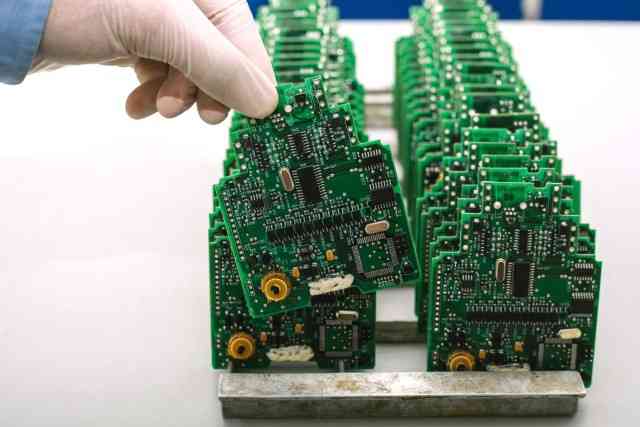US recycler Ronin8, which has developed ‘sonic technology’ that transforms low-grade printed circuit boards into a ‘smelter-ready’ material, has announced it is ready to scale up its operation so other types of electronics can be treated too.
Ronin8 is capable of separating metal from the non-metal matrix of printed circuit boards by means of a physical process. First, the input is fed through a shredder for size reduction. The suspended material is then circulated in recycled water through the sonic chamber. In there, the low frequency, high amplitude sound waves efficiently liberate the metals from non-metals.
Recirculation needed?
The fractions are separated into different concentrate categories. Any materials that are not yet fully separated are re-circulated in the sonic liberation circuit until separation is possible. This is followed by a de-watering and drying step. The size (<3mm) and shape of the metal and non-metal concentrates make them ‘ideal’ for accurate and fast assay.

No longer destroying material
This novel approach is said to be a good alternative for more traditional processes that rely on heavy chemicals, require higher temperatures and pretty much ‘destroy’ the non-metals in waste stream. The innovative method by Ronin8 can also treat the remaining non-metal fraction, thus saving it from landfill.
According to Ronin8’s director of engineering Travis Janke, extensive lab testing has confirmed that almost 50-60% of the non-metal can be recovered with an energy content of over 21GJ/t. This is said to be equivalent to the values of coal and dried wood.
On the road
Janke reports that the Ronin8 system is being adapted so that other materials like mobile phones, batteries, solar panels and cathode ray tubes may be processed in the near future. Besides, his team is launching a mobile system that fits in vehicles. Such a set-up is ‘ideal’ for meeting the data destruction needs of clients with the highest data security requirements – including the military.

Beyond metals
The new separation method was developed in partnership with the University of British Columbia. Its researchers confirm that the remaining fiberglass fraction with low calorific value can be used as a secondary raw material in construction, paint or insulation. The recycling partners are now exploring how to extract the hazardous flame retardants from the circuit board matrix.
Don't hesitate to contact us to share your input and ideas. Subscribe to the magazine or (free) newsletter.



Thank you for the article, I as a professional in the field of electronic waste management was very interesting to read this information.